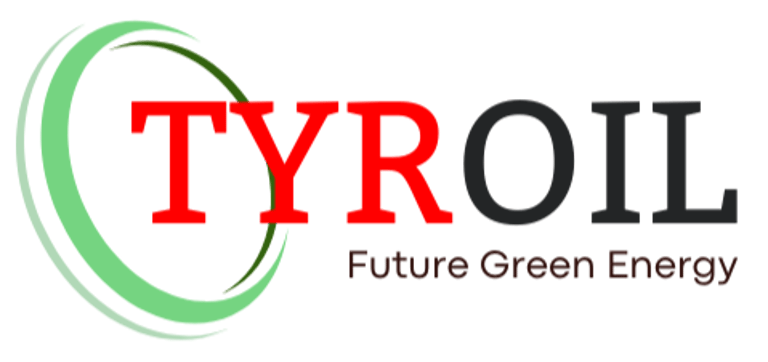The Numbers Game: A Deep Dive into TPO Investment Analysis
THE STORIES
TYROIL
7/11/20256 min read


In the world of investment, the pursuit of profit often stands in stark contrast to the desire for positive impact. Yet, a new breed of opportunity is emerging, one that promises both financial viability and a profound contribution to a sustainable future. This is the compelling proposition of Tire Pyrolysis Oil (TPO). For the astute investor, TPO isn't just about converting waste tires into fuel; it's about unlocking a financially sound venture that aligns with global environmental goals. This article delves into the crucial numbers behind TPO, offering a deep dive into its investment analysis, emphasizing the blend of profit and purpose that makes it a truly compelling opportunity.
The Initial Leap: Understanding Capital Expenditure (CAPEX)
Every significant venture begins with an initial investment, and a TPO pyrolysis plant is no exception. This upfront cost, known as Capital Expenditure (CAPEX), covers everything from the purchase of land and construction of facilities to the acquisition of specialized pyrolysis reactors, refining units, and associated infrastructure. The scale and technology chosen for the plant significantly influence the CAPEX [1].
For instance, a smaller, modular plant designed to process a few tons of tires per day will naturally have a lower CAPEX than a large-scale industrial facility handling hundreds of tons. Factors like automation levels, the complexity of the refining process (e.g., producing higher-grade fuels or specialty chemicals), and local construction costs all play a role. While the initial investment can be substantial, it's crucial to view CAPEX not as an expense, but as an asset that generates long-term value. Investors often look for technologies that offer a balance between efficiency and manageable upfront costs, and the TPO industry is seeing innovations in modular and scalable designs that make entry more accessible.
The Daily Grind: Decoding Operational Expenditure (OPEX)
Once a TPO plant is up and running, the focus shifts to Operational Expenditure (OPEX) – the ongoing costs associated with its daily operation. These include:
Feedstock Collection and Transportation: The cost of acquiring and moving waste tires to the plant. This can be a significant component, emphasizing the importance of efficient logistics and proximity to tire sources.
Labor Costs: Wages for plant operators, maintenance staff, and administrative personnel.
Energy Consumption: Powering the pyrolysis process, though modern plants are often designed to be energy self-sufficient by utilizing the syngas produced during pyrolysis [2].
Maintenance and Consumables: Regular upkeep of machinery, spare parts, and other necessary supplies.
Regulatory Compliance and Environmental Monitoring: Costs associated with adhering to environmental standards and obtaining necessary permits.
Efficient plant design, optimized processes, and skilled management can significantly reduce OPEX, directly impacting the profitability of the venture. For example, a plant that effectively utilizes its own syngas for heating will have lower external energy costs, boosting its bottom line.
The Payoff: Unpacking Revenue Streams
The financial attractiveness of a TPO business lies in its diverse revenue streams, derived from the valuable products generated during the pyrolysis process:
Tire Pyrolysis Oil (TPO) Sales: This is often the primary revenue generator. TPO can be sold as an industrial fuel, a blend component for marine fuels, or further refined into higher-value chemical feedstocks [3]. The market price for TPO is influenced by crude oil prices, but its stable production cost provides a competitive edge.
Recovered Carbon Black (rCB) Sales: A significant by-product, rCB is a sustainable alternative to virgin carbon black and is used in various industries, including rubber products (tires, conveyor belts), plastics, coatings, and inks [4]. The demand for rCB is growing as industries seek to reduce their carbon footprint.
Syngas Utilization: The non-condensable gases produced during pyrolysis (syngas) can be used to power the pyrolysis plant itself, reducing energy costs. Excess syngas can sometimes be sold or used to generate electricity, creating an additional revenue stream.
Carbon Credits/Environmental Incentives: In regions with carbon pricing mechanisms or environmental incentive programs, TPO producers may be eligible for carbon credits or other financial benefits for diverting waste from landfills and reducing greenhouse gas emissions [5].
These multiple revenue streams provide a robust financial model, diversifying risk and enhancing profitability.
The Investor’s Verdict: Return on Investment (ROI) & Payback Period
For investors, the ultimate question revolves around Return on Investment (ROI) and the Payback Period. While specific figures vary greatly depending on plant size, technology, market conditions, and management efficiency, TPO projects can offer attractive financial returns. Studies and pilot projects have demonstrated positive economic viability, with reasonable payback periods for well-managed operations [6].
ROI is calculated by dividing the net profit by the total investment cost. A higher ROI indicates a more efficient and profitable investment. The payback period, on the other hand, measures the time it takes for an investment to generate enough cash flow to cover its initial cost. TPO projects, particularly those with optimized CAPEX and OPEX, and diversified revenue streams, can offer competitive payback periods, making them appealing to investors seeking both short-term recovery and long-term gains.
Mitigating Risks for a Sound Investment
Like any business venture, TPO investment carries risks. However, these can be effectively mitigated through strategic planning:
Off-take Agreements: Securing long-term contracts with buyers for TPO and rCB before plant construction significantly reduces market risk and ensures stable revenue streams.
Diversified Product Sales: Relying on multiple revenue streams (TPO, rCB, syngas) rather than a single product reduces vulnerability to market fluctuations in any one commodity.
Modular Plant Design: Opting for modular and scalable plant designs allows for phased investment, reducing initial CAPEX and enabling expansion as market demand grows.
Technological Due Diligence: Thoroughly evaluating the chosen pyrolysis technology and partnering with experienced technology providers minimizes operational risks and ensures product quality.
Regulatory Compliance: Proactive engagement with regulatory bodies and strict adherence to environmental standards mitigates legal and reputational risks.
By implementing these risk mitigation strategies, investors can build a more resilient and secure TPO business.
The Investor’s Journey: From Skepticism to Success
Jane, a fund manager specializing in sustainable technologies, was initially skeptical about TPO.
She had seen many green ventures promise the moon but deliver little. Her clients demanded not just impact, but solid financial returns. When a colleague first mentioned TPO, her immediate thought was, "Another waste-to-energy pipe dream?"
But her curiosity was piqued by the consistent mention of TPO in reputable Scopus-indexed journals. She started her due diligence, focusing on the numbers. She analyzed CAPEX breakdowns, scrutinizing every line item from reactor costs to land acquisition. She delved into OPEX, understanding how feedstock collection, labor, and energy consumption impacted the bottom line. What truly impressed her were the multiple revenue streams: not just TPO, but also recovered carbon black and even syngas. This diversification, she realized, provided a crucial buffer against market fluctuations.
Jane commissioned independent financial models, stress-testing the ROI and payback periods under various market conditions. The projections were compelling. She also meticulously reviewed the risk mitigation strategies proposed by TPO companies – the off-take agreements, the modular designs, the commitment to quality. She saw a mature, well-thought-out business model, not a speculative gamble.
Convinced, Jane allocated a significant portion of her fund to a TPO project. Her clients, initially hesitant, soon saw the wisdom of her decision. The project delivered consistent returns, and its environmental impact was undeniable. Jane had found her sweet spot: an investment that was not only profitable but also genuinely transformative, turning a global problem into a sustainable solution. She had proven that the numbers game, when played with foresight and a commitment to sustainability, could lead to extraordinary success.
Conclusion: TPO – A Compelling Investment for a Sustainable Future
The detailed investment analysis of Tire Pyrolysis Oil reveals a compelling narrative for discerning investors. While requiring careful planning and execution, TPO projects offer attractive financial returns, diversified revenue streams, and significant opportunities for risk mitigation. The blend of a robust economic model with profound environmental and social benefits positions TPO as a leading contender in the sustainable investment landscape.
For those seeking ventures that promise both profit and purpose, TPO stands out as a strategic choice. It’s an opportunity to invest in a technology that addresses critical global challenges – waste management, energy security, and climate change – while building a resilient and profitable portfolio. As the world increasingly shifts towards a circular economy, TPO is not just a trend; it’s a fundamental component of a sustainable and financially rewarding future.
More Related Articles:
The Investor's Lens: Why Tire Pyrolysis is Attracting ESG-Focused Capital
Beyond Compliance: The Future of ESG and Tire Pyrolysis in Corporate Strategy
From Lab to Large Scale: The Journey of Pyrolysis Technology to Global Impact
The Investor’s New Horizon: TPO as a Geopolitically Sound Investment
References
[1] An economic analysis of scrap tire pyrolysis, potential and new opportunities. ScienceDirect. [https://www.sciencedirect.com/science/article/pii/S2405844022029577]
[2] Current Status and Potential of Tire Pyrolysis Oil Production as an Alternative Fuel. MDPI. [https://www.mdpi.com/2071-1050/13/6/3214]
[3] Viable Use of Tire Pyrolysis Oil as an Additive to Conventional Motor ... MDPI. [https://www.mdpi.com/2075-4442/13/2/64]
[4] Recovered Carbon Black: A Sustainable Alternative to Virgin Carbon Black. ResearchGate. [https://www.researchgate.net/publication/350329248_Developments_in_waste_tyre_thermochemical_conversion_processes_gasification_pyrolysis_and_liquefaction]
[5] Economic, environmental and social benefits of adoption of pyrolysis process of tires: A feasible and ecofriendly mode to reduce the impacts of scrap tires in Brazil. ResearchGate. [https://www.researchgate.net/publication/332557055_Economic_environmental_and_social_benefits_of_adoption_of_pyrolysis_process_of_tires_A_feasible_and_ecofriendly_mode_to_reduce_the_impacts_of_scrap_tires_in_Brazil]
[6] Global trends of waste tire pyrolysis research: a bibliometric analysis. ScienceDirect. [https://www.sciencedirect.com/science/article/pii/S2772783125000135]
